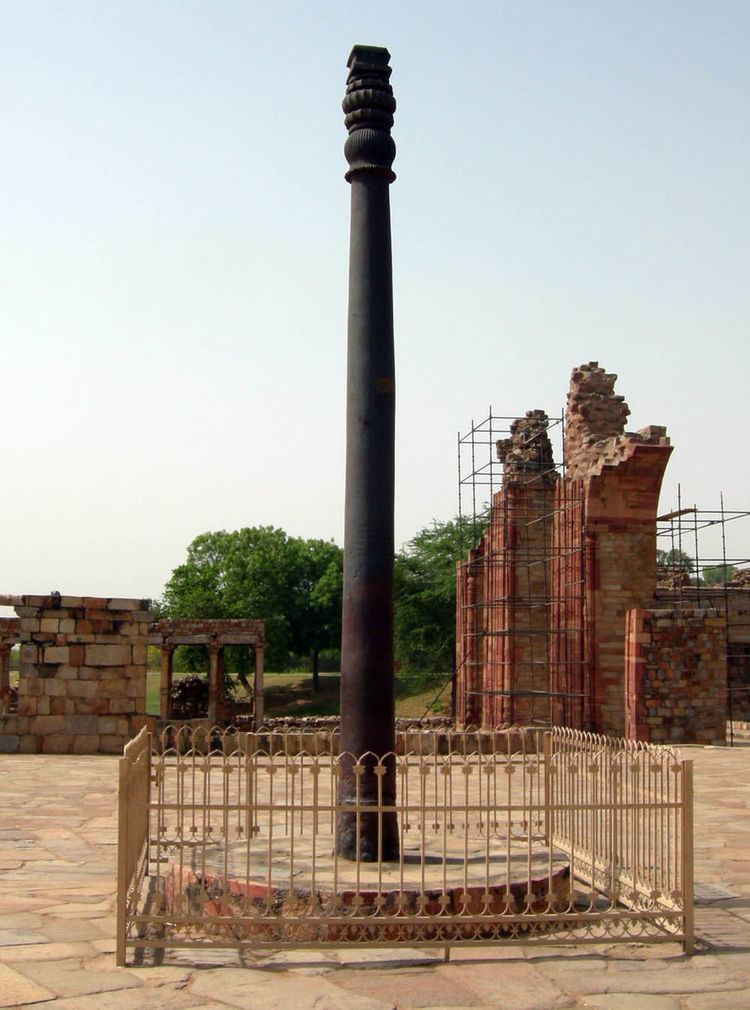 | ||
The conservation and restoration of iron and steel objects is an activity dedicated to the preservation and protection of objects of historical and personal value made from iron or steel. When applied to cultural heritage this activity is generally undertaken by a conservator-restorer.
Contents
- Conservation
- Identification of metals and alloys
- Identification of corrosion processes and products
- Identification of materials associated with metals
- Identification of technology used to produce objects
- Decision making
- Cleaning
- Structural consolidation
- Protective coatings
- Stabilization
- Preventive conservation
- References
Historically, objects made from iron or steel were created for religious, artistic, technical, military and domestic uses. The act of conservation and restoration strives to prevent and slow the deterioration of the object as well as protecting the object for future use. The prevention and removal of surface dirt and corrosion products are the primary concerns of conservator-restorers when dealing with iron or steel objects, including nickel-iron meteorites.
Conservation
Systematic and well-managed documentation is today an essential prerequisite for quality executed conservation and restoration treatments, including documentation of the state of objects before, during and after treatment. Identification of materials and procedures used to produce objects and the results of any scientific research must be part of documentation, too. Last but not least, an integral part of the documentation must be a recommendation for further care of object.
Identification of metals and alloys
Identification of corrosion processes and products
Identification of materials associated with metals
Identification of technology used to produce objects
Decision making
In preparing the strategy of the metals conservation project interdisciplinary approach to the same is essential.It implies the participation of as many experts as is possible, as a minimum, we can take curator (archaeologist, historian, art historian), scientists specialized for corrosion of metallic objects of cultural heritage and the conservator - restorer.
Cleaning
Painted objects must be cleaned with polar/non polar solvents or solvent mixtures.
Structural consolidation
Screws, rivets, gluing, soldering, welding may be used to conserve the structure.
Protective coatings
Cleaning
Only mechanical cleaning can be used(scalpel,micromotor and steel brushes and abrasive discs,microsandblasting unit,ultrasonic chisel).
Structural consolidation
Gluing only can be used,reversible types are the Best. Glass fibre reinforcments can be used too.
Stabilization
Protective coatings
Preventive conservation
The items should be stored in rooms that are protected from polluted air, dust, ultraviolet radiation, and excessive relative humidity - ideal values are temperature of 16-20 °C and up to 40%(35-55% according to recent Canadian Conservation Institute recommendations) relative humidity, noting that if metal is combined with organic materials, relative humidity should not be below 45%. Archaeological objects must be stored in rooms (or plastic boxes)with very low relative humidity, or in the case of particularly valuable items in the chambers with nitrogen or argon. Iron objects with active corrosion up to 12-15% RH. Shelves in the storerooms must be of stainless steel or chlorine and acetate free plastic or powder coated steel. Wood and wood based products(Particle board, plywood) must be avoided. Also do not use rubber, felt or wool .When you are handling metal objects,always wear clean cotton gloves . Lighting levels must be kept below 300 lux (up to 150 lux in case of lacquered or painted objects,up to 50 lux in case of objects with light sensitive materials) [54]
